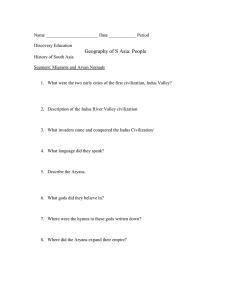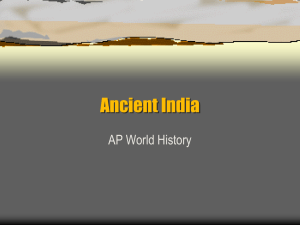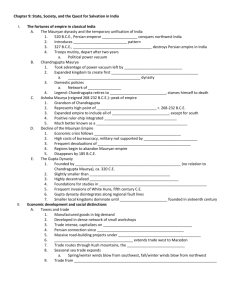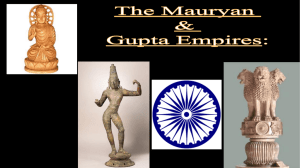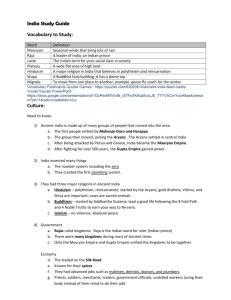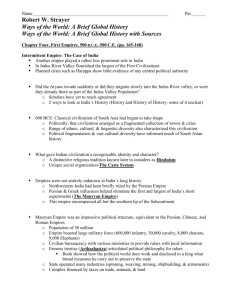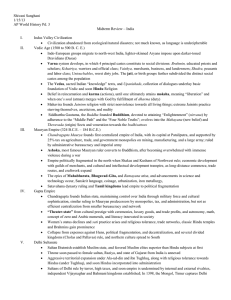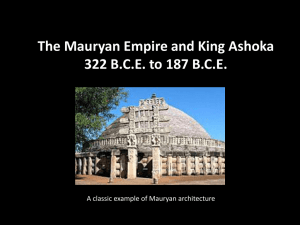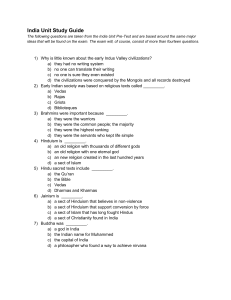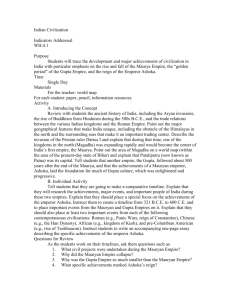Early River Valley Civilizations-India - amanda-armstrong
advertisement
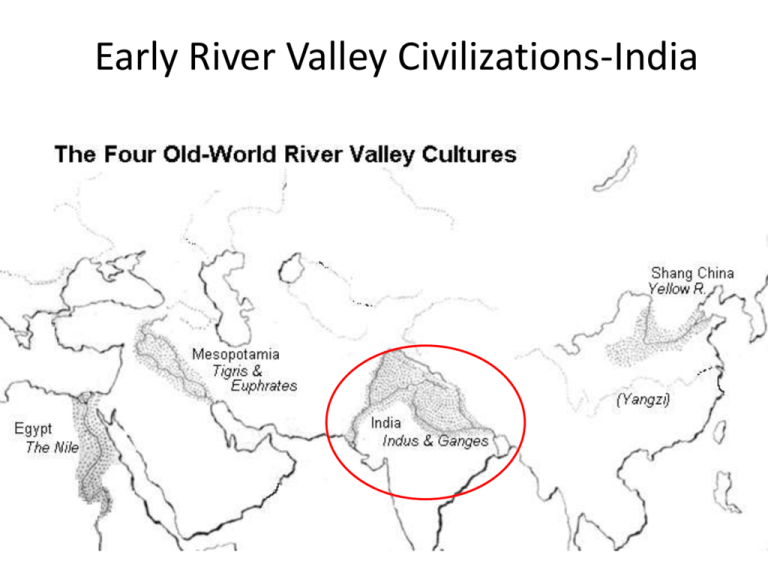
Early River Valley Civilizations-India I. Geography of India A. Subcontinent-India is surrounded by water on three sides and separated from the rest of Asia by two mountain ranges. B. Two Main Rivers 1. Indus River-provides water for farmland, location of India’s first civilization 2. Ganges River-flows through northern India, a sacred river for Hinduism Indus and Ganges Rivers I. Geography of India C. Deccan Plateau-a dry, flat region southern India I. Geography of India D. Two Mountain Ranges 1. Himalayas-create the northern border of India between China 2. Hindu Kush-one of the highest mountain ranges in the world, creates a border between India and modern Afghanistan I. Geography of India E. Thar Desert-sand and stone desert located in northwest India near the Indus River II. Indus River Civilization A. India’s first cities-Mohenjodaro and Harappa 1. 2700 BCE to 1900 BCE-cities along the Indus River 2. Discovered in 1922 by archaeologists II. Indus River Civilization B. Well organized cities around a citadel (fort) on a grid pattern 1. 50,000 people may have lived in Mohenjodaro 2. The Great Bath-large, brick pool for public bathing 3. Sewer system-world’s first system of drains, pipes, wells and bathrooms II. Indus River Civilization 4. Homes made of mud bricks surrounded the cities 5. Games-dice, stone balls, and game boards have been found in the cities III. Mauryan Empire-India’s First Empire (322-187 BCE) A. India was divided into many small kingdoms. The Maurya family unified much of India. B. Chandragupta Maurya created an army of 700,000 soldiers and 9,000 elephants to conquer northern India. 1. Chandragupta used a strong central government to rule his empire. a. He had a harsh rule and created laws b. Built over 1,000 miles of roads to connect the empire 2. At the end of his life Chandragupta gave up power and lived as an ascetic III. Mauryan Empire-India’s First Empire (322-187 BCE) C. The height of the Mauryan Empire was under Ashoka’s rule (Chandragupta’s grandson) 1. Ashoka became a Buddhist and embraced nonviolence 2. Ashoka helped to spread Buddhism beyond India III. Mauryan Empire-India’s First Empire (322-187 BCE) a. He had edicts (commands like a law) carved into pillars around India i. People could learn Buddhist values ii. Promoted general welfare-health, shelter, clean water and enough food iii. Justice-explained how to treat people fairly iv. Security-how to treat enemies of the Empire fairly IV. Gupta Empire-India’s Golden Age (320-550 CE) A. After the Mauryan Empire, India was broken into many small kingdoms. The Gupta’s reunited India IV. Gupta Empire-India’s Golden Age (320-550 CE) B. This empire was a time of great achievements 1. Universities-upper class students studied religion, mathematics, astronomy, chemistry and Sanskrit (language of ancient India) 2. Literature-poetry, fables, folktales, plays (both comedies and dramas), law and religions writings a. Two famous Hindu religious poems-Mahabharata describes Hindu values IV. Gupta Empire-India’s Golden Age (320-550 CE) 3. Metalwork-created coins honoring Gupta rules and their achievements 4. Mathematics-created the first form of the numbers we use today with 10 numerals and a place system 5. Roads-connected the empire and connected India to China and the Mediterranean Sea region
